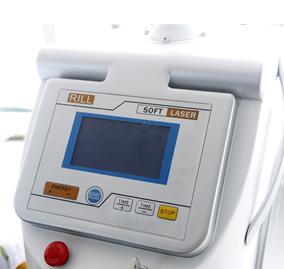
"I now go to China almost every month."
"What happened to you, I will go to China in the afternoon."
This small Nordic country, Finland, is full of unexpected enthusiasm for China. This enthusiasm does not seem to be a simple greeting. Take Planmeca, Finland’s largest manufacturer of dental equipment and imaging equipment. For example, in 2013, China had become its second largest sales market, and in the short term it was possible to surpass the United States as its largest sales market.
Finland has a population of 5.5 million people, but there are more than 15 universities and institutions related to life sciences, providing innovative technical support to more than 150 Finnish companies involved in the life sciences sector. Moreover, during 2006-2010, Finnish health care maintained an average annual growth rate of 7%. From 2010 to 2011, exports increased by 15% to nearly 1.4 billion euros.
The major export companies in Finland's healthcare sector are specialized companies that provide unique products for specific market segments. For example, Mylab is a company that provides information system services to medical institutions' laboratories.
Another feature of Finnish companies is that their scale is relatively small. Planmeca is one of the largest companies in Finland and employs approximately 2,500 people. And companies such as icare, which specializes in the production of new types of intraocular pressure measuring instruments, have only 15 employees.
Like many entrepreneurs in many countries and industries around the world, Finland's small, technologically-innovative companies have a very important way out of being acquired by multinational giants. However, Finns do not care much about this. Anyway, the cost of promotion and sales is high, and M&A does not affect their own R&D and innovation.
Action is the best proof. Finland is still strongly encouraging this innovation.
FiHTA, consisting of more than 70 medical technology companies, is a non-profit organization that has been established for 33 years. The main purpose of this organization is to unite all forces that can be united to promote the development of Finnish medical technology companies and create a better environment for their development.
According to Ms. Terhi Kajaste, head of FiTHA, organizations that have similar functions in Finland include the Finnish Federation of Technology Industries, the Finnish Trade Promotion Association, and so on. And from the perspective of the government, the Finnish National Science and Technology Agency will also provide financial support to entrepreneurs in the early stages of entrepreneurial ventures.
This is not only based on the successful experience of previous academic institutions working with SMEs, but more importantly, Finland has also seen great promise for the health services industry in the future.
Ms. Terhi Kajaste said that the promotion of health service industry and technological innovation are ageing, chronic disease growth, rising medical costs, and the growth of public funds, and the health service industry has already shown several major trends, such as preventive health care, Early diagnosis, personalized care, etc.
However, in talking about these major trends in the future, Finns basically understand clearly that opportunities under these trends are not going to come naturally. Finland has a population of more than 5 million and the market is small. Such as Mylab, a local leader in Finland, the total turnover in 2013 has reached 13 million euros, which has occupied 80% of the Finnish market. This means that we must expand overseas markets.
For example, Planmeca, currently its largest global sales market is the United States, China ranks second. However, Planmeca has put half of the company's attention on the Chinese market because they judge that the sales volume in the Chinese market will soon exceed the United States. This is mainly the rapid growth of private medical institutions in hospitals in China.
Since Planmeca's equipment is mainly sold to medical institutions by distributors all over the country, in fact, they do not have the exact data on the final product flow. But the reason why Planmeca judged the rapid growth of private medical institutions in China in recent years was based on a very interesting phenomenon.
Planmeca's equipment is available in several different models, some of which are more preferred by public hospitals, and they are larger, more expensive, and more expensive; while private medical institutions basically choose models that are relatively simple and relatively inexpensive. . Planmeca found that in recent years, the sales volume of simple-function models has increased rapidly. This, in their opinion, is a sign of the rapid development of private medical institutions in China.
Oem Surgical Drape Pack,Disposable Universal Surgical Drape Pack,Sterile Surgical Universal Pack,Disposable Surgical Universal Pack
Suzhou JaneE Medical Technology Co., Ltd. , https://www.janeemedical.com